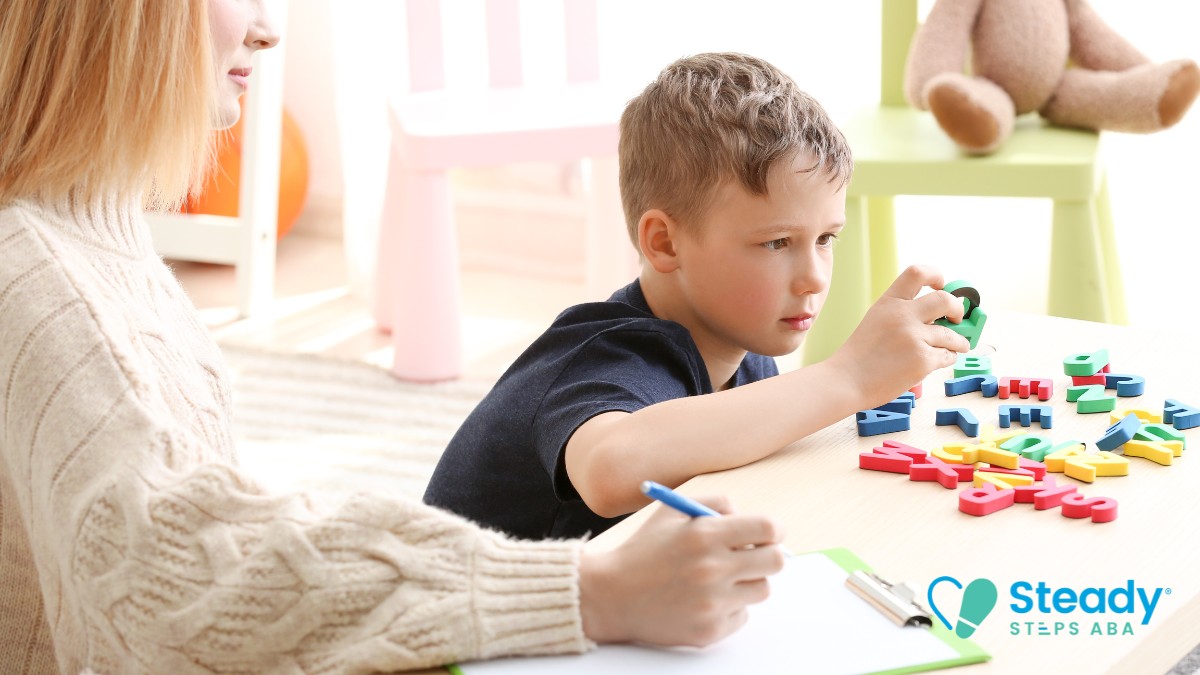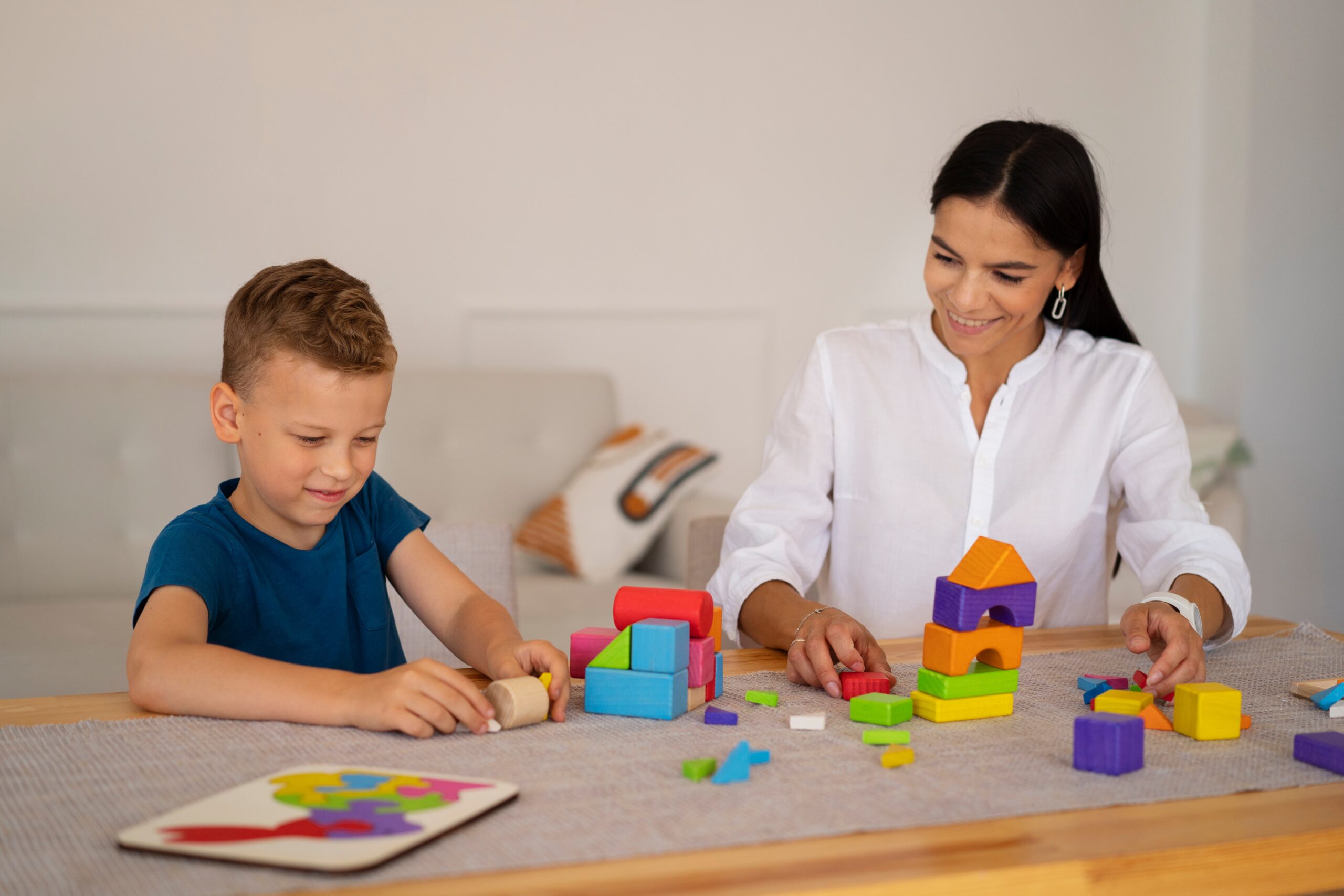Key Points:
- ABA therapy in Maryland is a structured, evidence-based service used to help children with autism develop critical life skills.
- Parents should understand the roles of BCBAs and RBTs, how individualized treatment plans work, and what to expect in the therapy process.
- Services can be offered in-home or in a clinical setting, and collaboration with the family is central to progress.
If you’re researching ABA therapy services in Maryland, chances are you’re trying to understand what this treatment really involves—and how it can help your child. Applied Behavior Analysis (ABA) therapy is widely recognized for its effectiveness in helping children with autism spectrum disorder (ASD) improve communication, behavior, and daily living skills. And providers in Maryland, like us at Steady Steps, deliver this therapy in ways that are both structured and flexible to meet each child’s needs.
Whether you’re new to the term or have already started exploring options, here’s a complete guide on what you should know before starting—or continuing—ABA therapy for your child.
What Is ABA Therapy and How Does It Work?
ABA therapy is a science-based approach to understanding behavior. It uses reinforcement strategies to teach meaningful skills and reduce behaviors that interfere with learning and independence.
The core idea is simple: behaviors that are rewarded tend to increase, while those that don’t receive reinforcement fade over time. But while the principle is simple, the practice is incredibly detailed and tailored.
Therapists track data during each session to measure a child’s progress. Goals are broken down into small, achievable steps—whether it’s learning to make eye contact, ask for help, or brush teeth independently.
In Maryland, ABA therapy can be delivered in various settings, including homes, clinics, or schools. At Steady Steps, we offer in-home therapy to support families in the environments where their children live, learn, and grow.
Who Delivers ABA Therapy?
Understanding the professionals involved in ABA services will help you know what to expect and how to communicate during treatment.
Here’s who typically makes up an ABA team:
- Board Certified Behavior Analyst (BCBA):
The BCBA is the lead clinician who assesses your child’s needs, writes the therapy plan, and supervises the team. They also meet with families regularly to review progress and make necessary adjustments.
- Registered Behavior Technician (RBT):
The RBT works directly with your child on a daily or weekly basis. They implement the treatment plan under the BCBA’s supervision. RBTs collect data, run teaching programs, and manage behavior strategies.
- Caregivers and Parents:
Yes, you’re part of the team. Your involvement is key to ensuring skills learned in therapy carry over to the rest of daily life. Many providers, including us, include parent training as a built-in part of the service.
Key Features of ABA Therapy Services in Maryland
ABA therapy in Maryland is structured to meet both state and insurance guidelines while allowing for personalized flexibility. Here’s what defines high-quality ABA services:
1. Individualized Treatment Plans
Every child is different, so ABA therapy should never be one-size-fits-all. After an initial assessment, the BCBA creates a personalized plan that targets specific goals based on your child’s strengths and needs.
These goals might include:
- Communication (verbal or non-verbal)
- Self-help skills (dressing, toileting)
- Social interaction (playing with peers, turn-taking)
- Behavior reduction (tantrums, aggression)
2. Data-Driven Progress
Therapists collect data throughout every session. This isn’t just for show—it’s how we know whether a child is mastering a skill or if the strategy needs tweaking. You’ll receive regular updates based on this data.
3. Parent Collaboration
Parent involvement is essential. You’re not expected to be an expert, but the more you’re engaged, the more progress you’re likely to see. We walk you through what we’re doing, why it matters, and how you can continue supporting your child outside of sessions.
4. Flexible Service Delivery
In Maryland, many families choose between in-home and clinic-based ABA. At Steady Steps, we specialize in in-home ABA therapy because it lets children learn in familiar environments and allows for more family-centered care.
 What to Expect When Starting ABA Therapy
What to Expect When Starting ABA Therapy
Starting ABA therapy can be a major transition—but knowing the steps ahead can make it more manageable. Here’s what the process typically looks like:
1. Initial Intake and Assessment
After insurance authorization, a BCBA visits your home or meets with you virtually to assess your child’s behavior, skills, and daily routines. This may include structured assessments and natural observations.
2. Plan Development
Using the results of the assessment, the BCBA writes a treatment plan outlining goals, behavior strategies, session frequency, and caregiver involvement. You’ll get to review and approve this plan.
3. Therapist Introduction and Pairing
Your assigned RBT will spend time getting to know your child through play and non-demanding interactions. This step, called “pairing,” helps build trust and engagement before diving into formal learning.
4. Active Therapy Sessions Begin
Once pairing is complete, your child will start targeted learning sessions. These might include direct teaching, natural environment training (like learning during meals or play), and behavior reduction plans.
5. Ongoing Supervision and Updates
The BCBA will review progress at least monthly and adjust goals as needed. You’ll be kept in the loop with updates, meetings, and training along the way.
Common Misconceptions About ABA Therapy
ABA has been around for decades, but there’s still confusion about what it is—and what it’s not. Here’s some clarity:
- It’s not about punishment. ABA uses positive reinforcement. The focus is on teaching new behaviors, not punishing old ones.
- It’s not robotic. The therapy is highly individualized and often playful. Children aren’t forced to repeat drills; they learn through structured activities that are engaging.
- It’s not just for young children. While early intervention is ideal, ABA can be effective for older children, too. Goals and teaching methods are simply adapted for age and developmental level.
Choosing the Right ABA Provider in Maryland
The success of ABA therapy doesn’t just depend on the method—it depends on the people delivering it. When choosing a provider, keep an eye out for:
- BCBA Involvement: Are supervisors actively reviewing progress and meeting with you?
- Parent Training: Are you included in the therapy plan and regularly updated?
- Flexible Scheduling: Does the provider offer hours that match your family’s needs?
- Transparent Communication: Are you receiving clear information about goals, challenges, and updates?
At Steady Steps, we prioritize these elements to ensure that families feel supported and that each child has the chance to succeed.
 Important Questions to Ask Your ABA Provider
Important Questions to Ask Your ABA Provider
Asking the right questions can help you make informed decisions about your child’s care. Here are a few to consider:
- How are therapy goals chosen and updated?
Look for a provider who uses assessment tools and parent input—not just generic templates.
- How often will I meet with the BCBA?
Regular supervision is essential. Monthly or biweekly check-ins are common.
- What kind of training does the RBT have?
RBTs should be credentialed and closely supervised.
- How is progress measured?
Expect to see graphs, reports, and clear data showing whether goals are being met.
- How will I be involved?
Parent participation should be more than optional—it should be built into the process.
Wrapping Up: Understanding ABA Therapy with Confidence
If you’re considering ABA therapy in Maryland, it’s important to go in with clarity—not just about the methods, but also about how the service will fit into your child’s life. From understanding who’s involved to knowing what to expect day-to-day, the more you know, the more empowered you’ll feel.
At Steady Steps, we’re here to guide you through every part of that journey. We offer in-home ABA therapy in Maryland with a focus on collaboration, measurable outcomes, and support that feels personal—because it is.
Get in touch today to learn more about our ABA therapy in Maryland and how we can support your family’s next steps.






